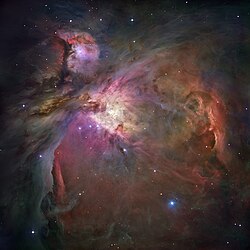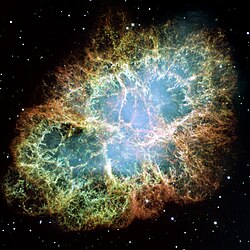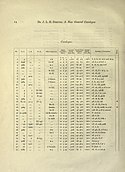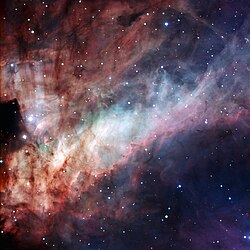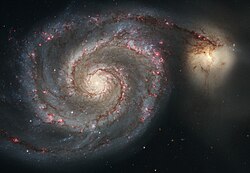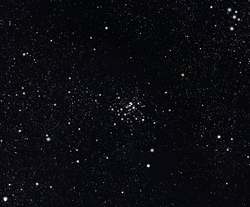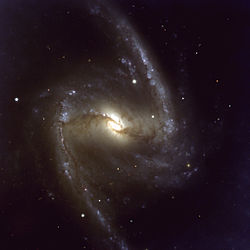NGC 2683 Spiral galaxy
While a bird's eye view lets us see the detailed structure of a galaxy (such as this Hubble image of a barred spiral), a side-on view has its own perks. In particular, it gives astronomers a great opportunity to see the delicate dusty lanes of the spiral arms silhouetted against the golden haze of the galaxy’s core. In addition, brilliant clusters of young blue stars shine scattered throughout the disc, mapping the galaxy’s star-forming regions.
Perhaps surprisingly, side-on views of galaxies like this one do not prevent astronomers from deducing their structures. Studies of the properties of the light coming from NGC 2683 suggest that this is a barred spiral galaxy, even though the angle we see it at does not let us see this directly.
This image is produced from two adjacent fields observed in visible and infrared light by Hubble’s Advanced Camera for Surveys. A narrow strip which appears slightly blurred and crosses most the image horizontally is a result of a gap between Hubble’s detectors. This strip has been patched using images from observations of the galaxy made by ground-based telescopes, which show significantly less detail. The field of view is approximately 6.5 by 3.3 arcminutes.Relevante Bilder
Relevante Artikel
New General CatalogueDer New General Catalogue of Nebulae and Clusters of Stars (NGC) ist ein Ende des 19. Jahrhunderts entstandener Katalog von galaktischen Nebeln, Sternhaufen und Galaxien, der noch heute als Standardwerk gilt. Er wurde in den 1880er-Jahren zusammengestellt und 1888 von Johan Ludvig Emil Dreyer veröffentlicht; eine wichtige Grundlage waren die systematischen Himmelsdurchmusterungen und speziellen Beobachtungen von Wilhelm Herschel. 1895 und 1908 wurde der NGC um die beiden Index-Kataloge IC I und IC II erweitert. Der NGC enthält 7840 Einträge, darunter auch die meisten des Messier-Katalogs. Im Unterschied zu diesem sind die Objekte des NGC-Katalogs nach Rektaszension geordnet. Er enthält Objekte des Nord- und des Südhimmels. Der Katalog enthält jedoch einzelne Fehler – z. B. sind einige Objekte mehrmals unter verschiedenen Katalognummern enthalten oder wurden nochmals in einen der Index-Kataloge aufgenommen. Der Versuch, diese Fehler zu beseitigen, wurde 1993 durch das NGC/IC-Projekt initiiert, nach teilweisen Versuchen mit dem Revised New General Catalogue (RNGC) von Jack W. Sulentic und William G. Tifft im Jahr 1973 und NGC2000.0 von Roger W. Sinnott im Jahr 1988. Eine vollständige Überarbeitung des NGC und der zugehörigen Indexkataloge wurde von Wolfgang Steinicke 2009 erstellt. .. weiterlesen


